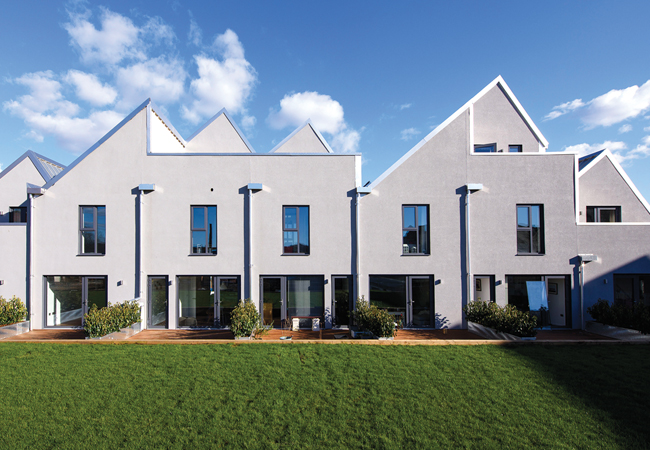In a recent CIBSE Journal article on the future of heat (April 2018), Hywel Davies said that ‘conventional fossil-fuel heating systems may no longer be the obvious choice for new buildings’.
He was writing about how we might meet future government targets on greenhouse gas emissions. While these may shift and change over the years (remember zero carbon new housing by 2016?), we are meant to be reducing CO2 emissions by 60% by 2030. To achieve this, we will have to reduce the use of natural gas drastically – and because the gas boilers and water heaters we specify in 2018 should still be in use in 2030, we have to start thinking about this now.
It’s easy to say ‘stop specifying gas boilers’, but it’s harder to offer practical, cost-effective alternatives for all types of buildings, both new and refurbishments. So what’s the best approach to solving this problem?
We could start by further reducing the heating requirement for buildings on new-build and refurbishment projects – for instance, by specifying thermal insulation to Passivhaus standards and being sensible about the extent of glazing on buildings. Then there are the options for heating and hot water to review.
Before going any further, however, I need to mention the solution offered by some proponents of the hydrogen economy that involves changing to a hydrogen gas grid.
This is not a new idea, and Northern Gas Networks has recently been given £9m by Ofgem to look at the practicality of converting the city of Leeds from natural gas to hydrogen. Creating a hydrogen gas grid is not without its safety and technical problems, however, and the process of producing hydrogen using electricity is currently only 50% efficient.
So while a hydrogen gas grid is an interesting idea, it’s not yet a good idea, and not one we can rely on to solve all our problems.
We need to be able to specify small, high-efficiency domestic heat pumps that cost no more to install than a decent gas boiler
Biomass boilers, using wood chip or pellet, can meet some of our heat requirements using sustainable timber sources, but it will only be a small percentage of the total. There is a limit to the total area of the UK that we can use for forestry, and truly sustainable wood management is not easy to achieve on a large scale. Anyone who saw the recent TV programme about the lack of biodiversity in USA woodlands that supply Drax power station with a million tonnes of wood pellets a year will know what I mean.
Heat pumps – air-source and ground-source – are already a common option for new commercial buildings and some eco-housing. However, they can’t replace a gas boiler in a standard wet heating system – which uses 70°C or 80°C flow to panel radiators – and are not very efficient supplying hot water at 60°C.
District and community heating is an increasingly popular option and is another area into which some government money is going. District heating, using heat from waste incineration plants, is one way of getting away from using fossil fuels – apart from burning all the non-recyclable plastic packaging we throw away, that is. Those systems relying on gas or diesel-powered combined heat and power don’t fit the bill, however.
New housing is an area in which ending the use of gas boilers is going to be a challenge. Developers are reluctant to pay three or four times as much for a heat-pump installation as they would for a gas combination boiler.
Well-insulated new houses can use more energy for hot water than for heat, and heat pumps aren’t so clever at providing hot water at 60°C.

Little Kelham, a mixed-use development in Sheffield, has electric heating mats embedded in the internal walls of some rooms
The small heating requirement for new housing also makes district heating less attractive because it inevitably increases the proportion of heat lost in distribution pipework.
Using electric resistance heating in Passivhaus standard houses is an option, but this doesn’t deal with hot-water requirements. It’s also clear that, if we are going to end up with an electricity grid supplied entirely from renewable energy, we have to be careful about using electricity to maximum effect.
Some innovation is required. We need to be able to specify small, high-efficiency domestic heat pumps that cost no more to install than a decent gas boiler. Could we find a simple solution to storing hot water at the temperature we use it – say, 45°C – without worrying about legionella?
I may have presented more problems than solutions, but the aim was to highlight an issue that we need to address sooner rather than later.
■ Matthew Hill is director of energy consultancy and building services engineering at Leeds Environmental Design Associates (LEDA)
